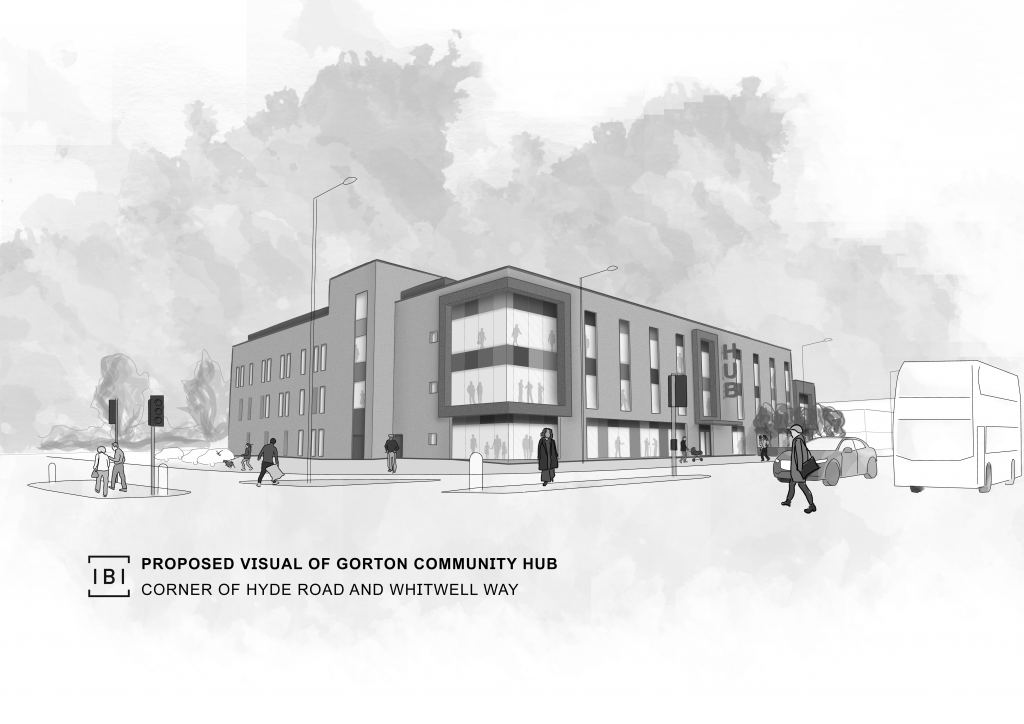Connecting the Dots: Our Journey Towards Integrated Care
Date
August 6, 2019The World Health Organization defines health as ‘not merely the absence of disease or infirmity, but a state of complete physical, mental and social well-being’. At a recent roundtable event, hosted by IBI Group, key stakeholders from Manchester’s healthcare system came together to discuss the evolving state of healthcare under these expansive pretenses.
While our global healthcare system becomes more consumer-powered and technology-enabled, big data is accelerating value and innovation in the sector. As this era progresses, there are a number of key factors to consider on this journey towards integrated healthcare:
- What are the infrastructural needs to support place-based delivery of wellbeing?
- What are the implications of healthcare technology on the future need for estate solutions?
- Who are the best parties to lead the new healthcare landscape in developing estate solutions?
- What lessons can we learn from current developments to guide future projects?
Involving and Activating Communities
Responding to the needs of the community is essential to enable place-based delivery of wellbeing services. This involves co-designing services with as many local partners as possible to ensure community interest and ownership. In Sweden, a platform in which people from socially disadvantaged areas become collaborators on public health promotion activities proves that co-promoted engagement ensures successful delivery of services. Here, community representatives are empowered to support and deliver health and wellbeing approaches that achieve higher engagement when compared with professional led delivery of similar healthcare services.
Embedding healthy behaviors is fundamental to empowerment. A successful example of where healthy lifestyles has led to increased life expectancy include the Blue Zones Education Challenge, an innovative approach to support young people. Here, school pupils are encouraged to take charge and support their own health in a four week programme that embeds healthy behaviors in their lifestyle to create a “blue zone” in the wider community.
Healthy Placemaking
How can the built environment support this empowerment? There is much evidence surrounding the value of placemaking to communities, but limited evidence exists for the impact of healthy place delivery in communities. The NHS Healthy New Towns programme has been presented as a significant initiative in this regard, and the forthcoming ‘Putting Health into Place’ document was highlighted for offering practical guidance on approaches to develop healthy places.
During the event, it was agreed upon that a wider, more strategic approach to healthy placemaking is required to ensure successful delivery. One that leads to the planning and development of new towns and places that embed healthy design principles. Public health and healthcare commissioners are considered key parties to this and should be involved in the development of local plans. Supplementary planning guidance is an opportunity to further progress this agenda. Already, existing Bristol Council development briefs demonstrate an active approach in which local authorities create healthier places.
The Renaissance of Public Sector Funding Models
At the infrastructural level, it’s been noticed that across the UK, varying projects are coming forward with local authority leadership. With accessible funding through prudential borrowing, local authorities are acting as landlords to other public sector organizations such as GP practices, community-based healthcare organizations and NHS Foundation Trusts. This model reflects the availability of public sector capacity whilst enabling co-location and integration of public sector services.

Manchester’s first integrated community healthcare and community centre, Gorton Community Hub. Click here to view larger image.
Connecting the Dots
An open information era is now underway in the healthcare sector. If new infrastructure is required, it must be highly flexible and amenable to digital control and management. NHS Open Space, a digital solution delivered by NHS Property Services, is one such example where users can access information about healthcare space and infrastructure availability across the country.
IBI Group is grateful to the contributions from Manchester University Hospitals NHS Foundation Trust, Community Health Partnerships, One Partnership, GB Partnerships, Lexington Communications and Rider Levett Bucknall in regards to our healthcare event. Collectively, we would like to share the following as our core takeaway messages:
- Whether at a national or local level, greater linkages between public health, healthcare commissioners and strategic planning needs to take place to lead to places that better support health and wellbeing.
- Engaging with local communities over their aspirations for service delivery can lead to greater ownership and empowerment of that community.
- Any decisions over new infrastructure need to be backed by an agenda of flexibility and multiple uses, with commercial and contractual models developed to reflect this approach.
Justin is an architect with over 25 years of experience in the healthcare sector. Working across the acute, primary and out-of-hospital care sector, his strength lies in the design and development of complex, multi-stakeholder projects such as: With an interest in progressive healthcare systems, Justin has supported innovation programs such as the NHS Healthy New Towns initiative.









